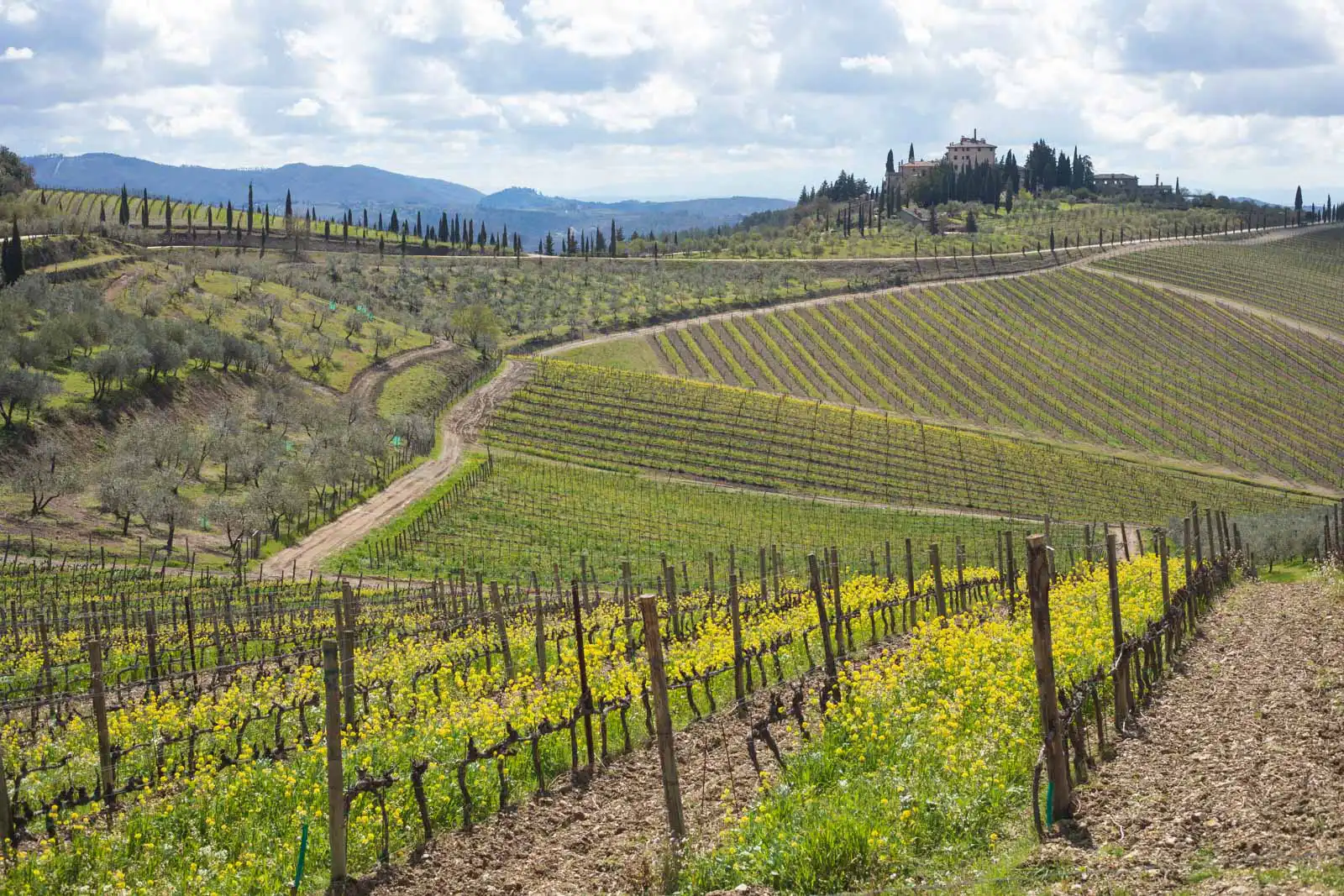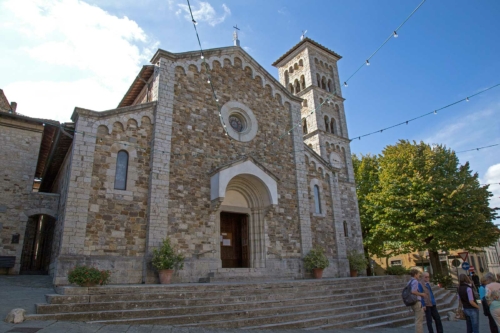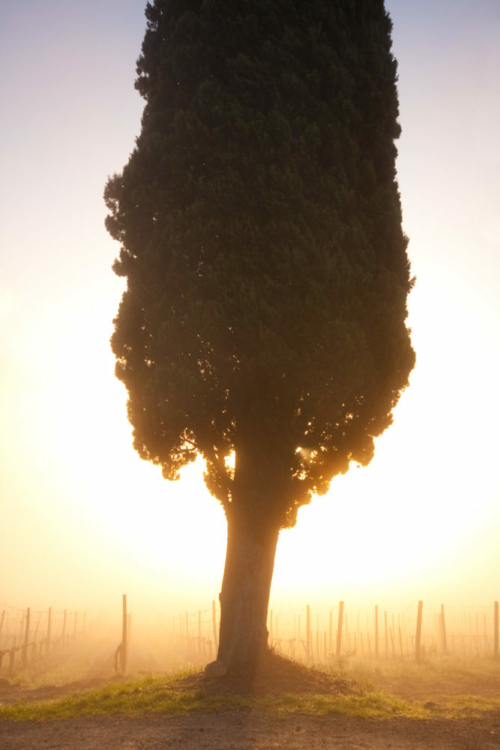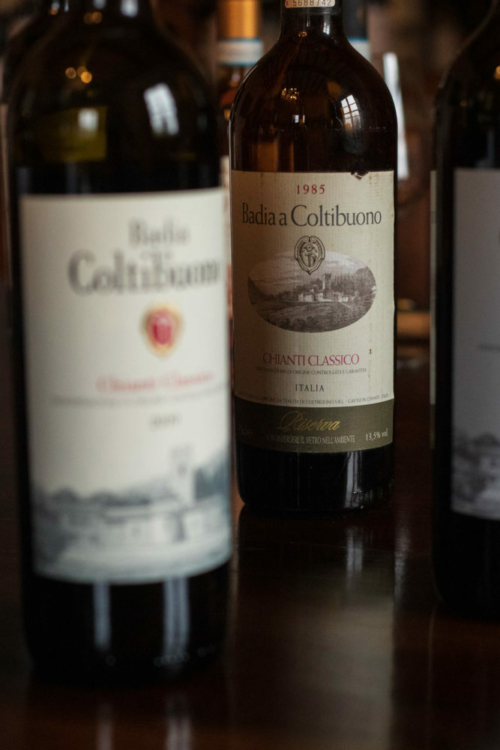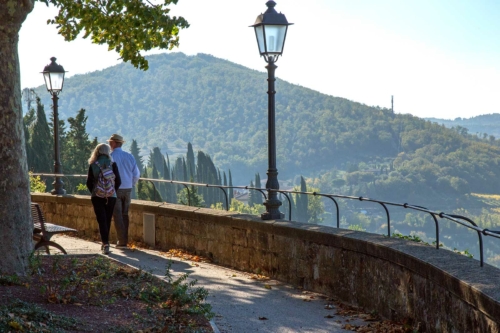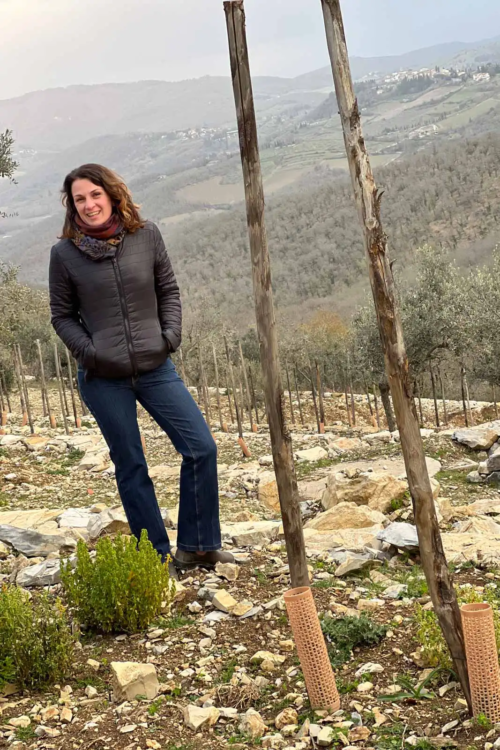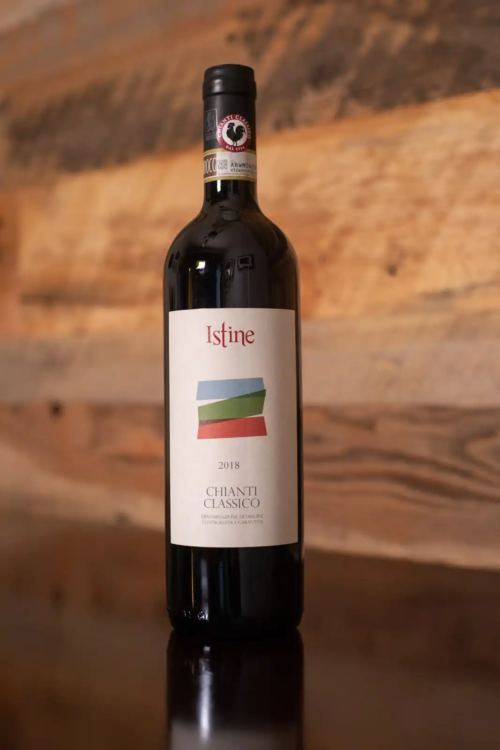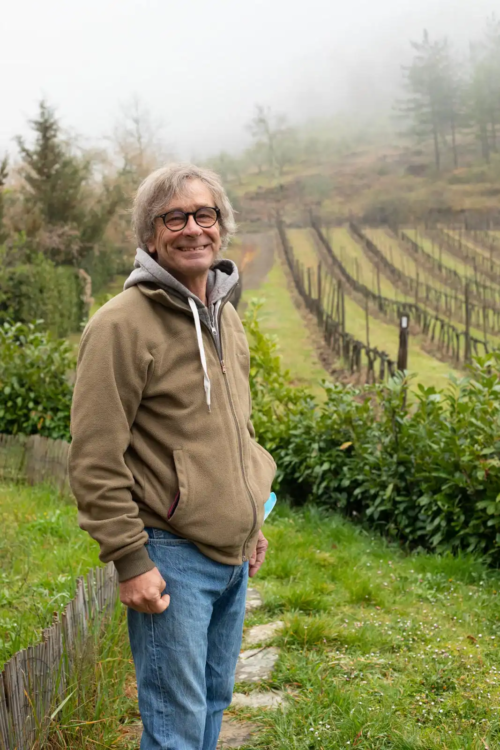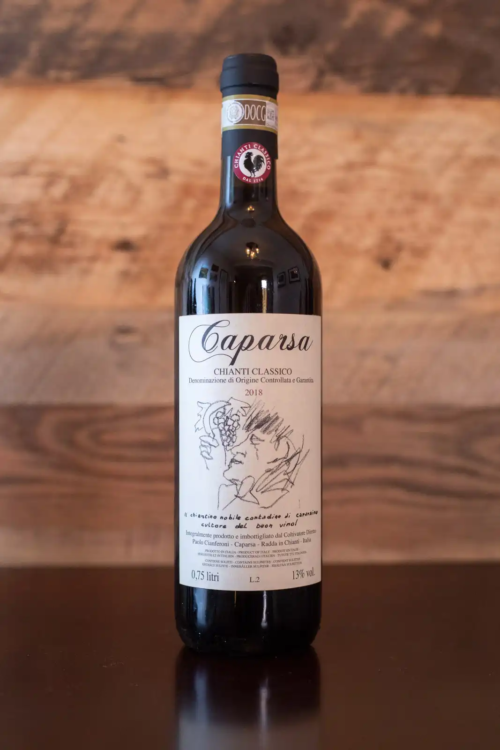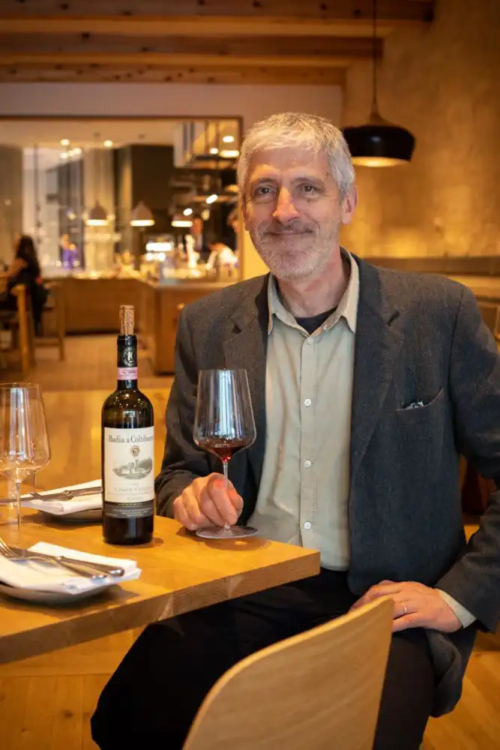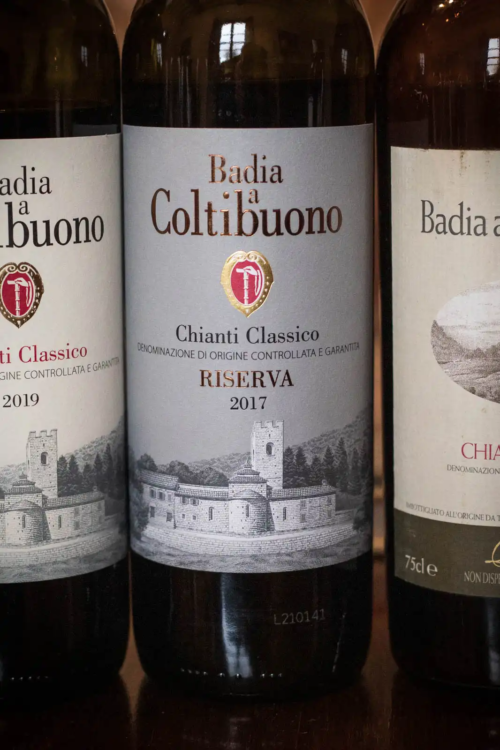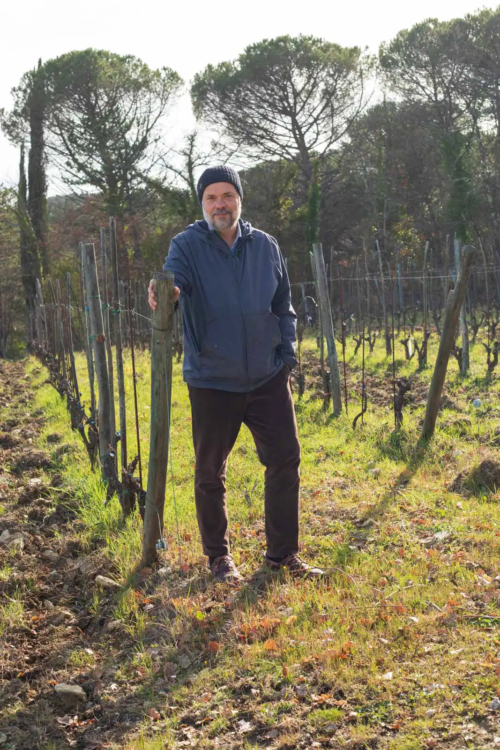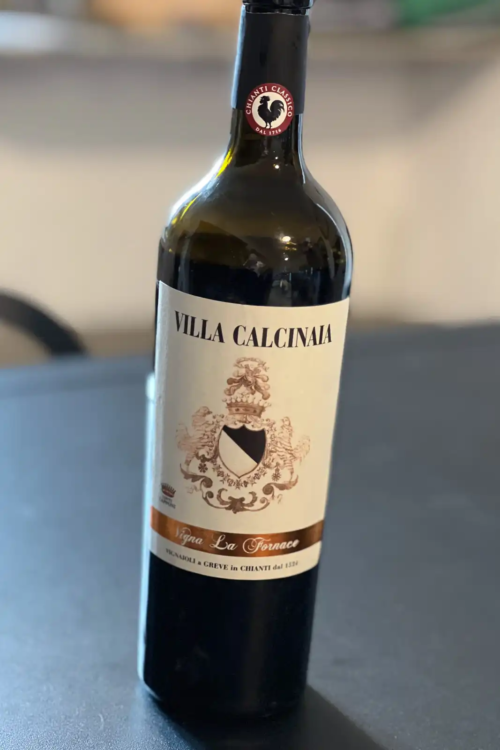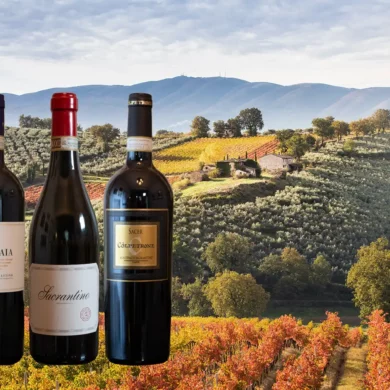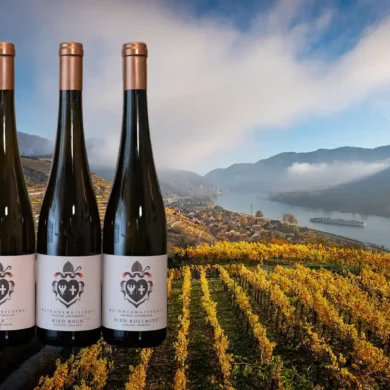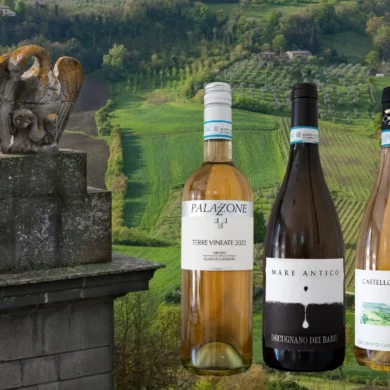Raise your hand if you have never tasted Chianti Classico? As I turn the attention of our First-Taste Guide series to central Tuscany, I can’t help but wonder: Who hasn’t had a first taste yet of this famous, ubiquitous red wine?
Chianti Classico is Italian red wine to many people. From fine Italian dining to your neighborhood pizzeria, the wine selection is guaranteed to have at least one Chianti Classico.
Or is it?
Chianti Classico has been a moving target since the Middle Ages, and it has only found its current form in the last few years.
Check that laminated wine menu again. Do you see the word “Classico?” Without that word, it is a different wine. Chianti Classico is where it all began, but there is also Chianti, Chianti Superiore, Chianti Rùfina, Chianti Colli Senesi and five other name combos that you’ll see — all of them Tuscan, all of them predominantly Sangiovese, but none of them from the same geographical area as the original. And that’s important because Chianti Classico has what the supremely fickle Sangiovese grape wants in terms of soil, elevation and weather. You might find ideal pockets for Sangiovese cultivation in the other zones, but nothing on the scale of what Chianti Classico offers.
Given the area’s historical significance and viticultural richness, it is rather surprising that so many people — even wine professionals — aren’t quite sure what Chianti Classico is and where exactly it comes from.
But it’s also understandable. Chianti Classico is complex, and its wines have been a moving target since the Middle Ages. It has only found its current form in the last few years. In fact, recent changes to the production code indicate that the appellation is still sorting out its top priority: winemaking process or terroir? (Correctly, it appears to be leaning toward the latter). Winemakers have gained a better understanding of Sangiovese’s diverse clones, and with these improved regulations, the Chianti Classico DOCG is once again competing with Barolo and Bordeaux — and most notably, Brunello di Montalcino — for the attention of fine wine enthusiasts and collectors.
If you want more good news, know this: the area is a leader in organic viticulture. Plus, you can still drink a solid Chianti Classico for a decent price. Let’s explore the wines with the black rooster on the label.
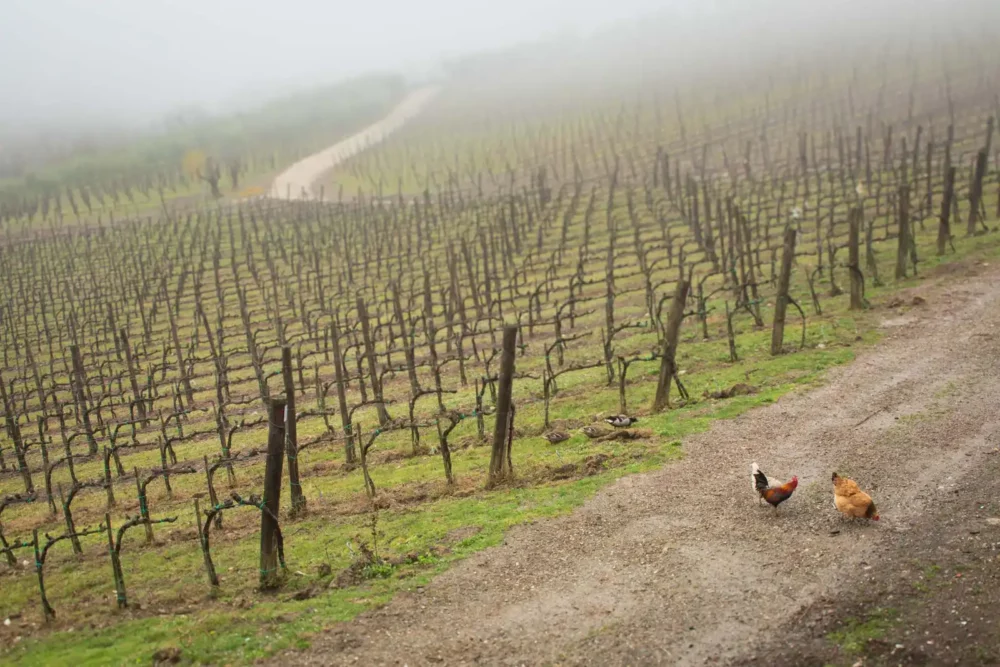
3 Reasons to Drink Chianti Classico
- It Can Be One of Italy’s Greatest Red Wines – At its best, Chianti Classico’s mix of flavors and aromas are reminiscent of sour cherries, leather, and orange citrus. Mysteriously, they feel like the place they come from: a land of rolling hills, olive groves, and ancient castles and abbeys.
- It Can Be Fresh and Vibrant, or Structured and Age-Worthy – Chianti Classico is a spectrum. If you fall in love with it, you’ll find a huge diversity of wines, often within the same producer portfolio.
- It is the History Channel in a Glass – Some of Chianti Classico’s wineries are among the oldest continuously-operated businesses in the world. To open these bottles is to participate in a story that stretches back to the Middle Ages.
What is Chianti Classico DOCG?
Truthfully, this is one of Italy’s hardest wine appellations to explain, so buckle up.
On the simplest terms, Chianti Classico is merely a region of regulated red wines from the hills between Florence and Siena. Only wines from this area that fit distinct parameters can be called Chianti Classico.
That region encompasses a varied collection of distinct zones centered on historical villages, broad mountain valleys, and rolling hillsides. Recent efforts to delineate these areas will likely lead to a better appreciation of Chianti Classico’s nuances in the glass. However, given the variety of winemaking blends and methods used, these details can still be tricky to decipher.
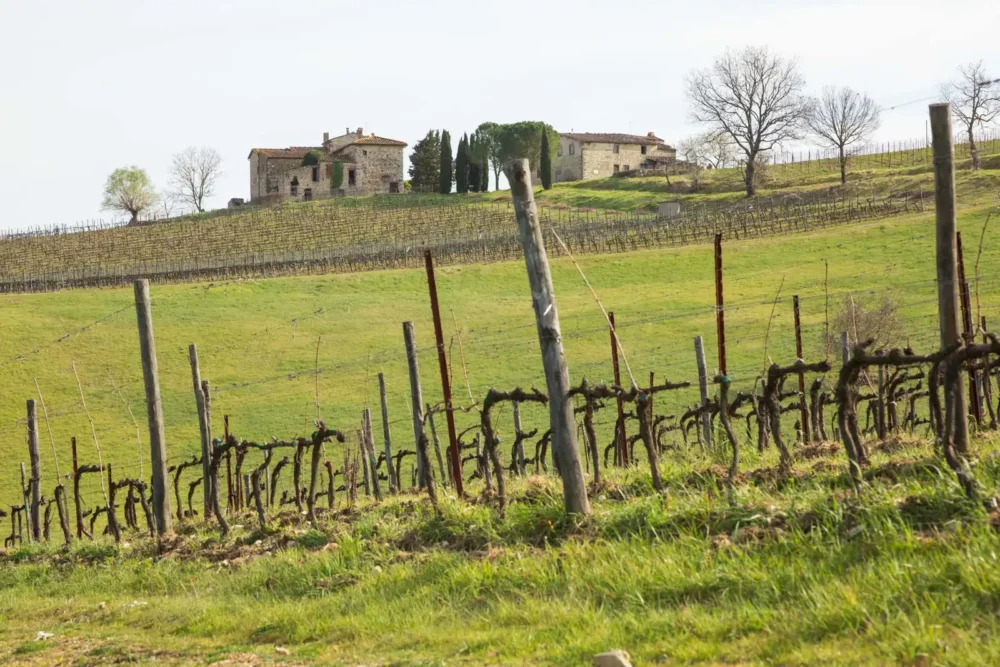
As noted, the wines can be a blend or varietal, but Sangiovese is always in the lead. Blending partners can vary in proportion (see Blend vs. Varietal below) but cannot exceed a total of 20% of the wine.
Unlike many appellations, aging requirements are for time in bottle rather than time in oak. Three distinctive categories define the aging of the wine (see Categories below). Some producers refer to this as a “quality pyramid.” However, I think it is far better to see these categories as contextual suggestions. Some of the most satisfying, rewarding wines in Chianti Classico are the so-called “entry-level” wines with the least amount of aging. (They often have the most versatility in terms of food pairings, too).
Chianti Classico can feel like a muddled picture because of this enormous diversity. But increasingly, the region is honing its focus more and more by elevating the varietal characteristics of Sangiovese: dark and succulent cherry-fruit flavors, a citric acidity, and savory tones that can range from leather to bacon to smoked meat. Not all Chianti Classico wines showcase this triumvirate, but the best ones do. (See Your First-Taste section below for our suggestions).
About the Appellation and Its Wines
Before we dig into the details, it is important to refer you to our article on Chianti Classico’s lengthy history.
Throughout their time, the wines of Chianti Classico have taken on many different forms. Documentation shows that many of the esteemed regional wines from the 12th century were actually white. Red wines increasingly took over through the Middle Ages, and it is widely believed that by the 1800s many wines were Canaiolo dominant. Eventually, Sangiovese’s charisma won out, but not after it was blended with other indigenous red grapes, Bordeaux varieties and even white grapes at different periods of time.
Understanding this history helps explain why today’s wines have such variety.
Now, on to the details on how these wines today are comprised, categorized and the contexts with which they are best served.
Blend vs. Varietal
Presently, the laws governing current releases demand that wines must contain a minimum of 80% Sangiovese with a maximum of 20% auxillary grapes allowed under the legal code.
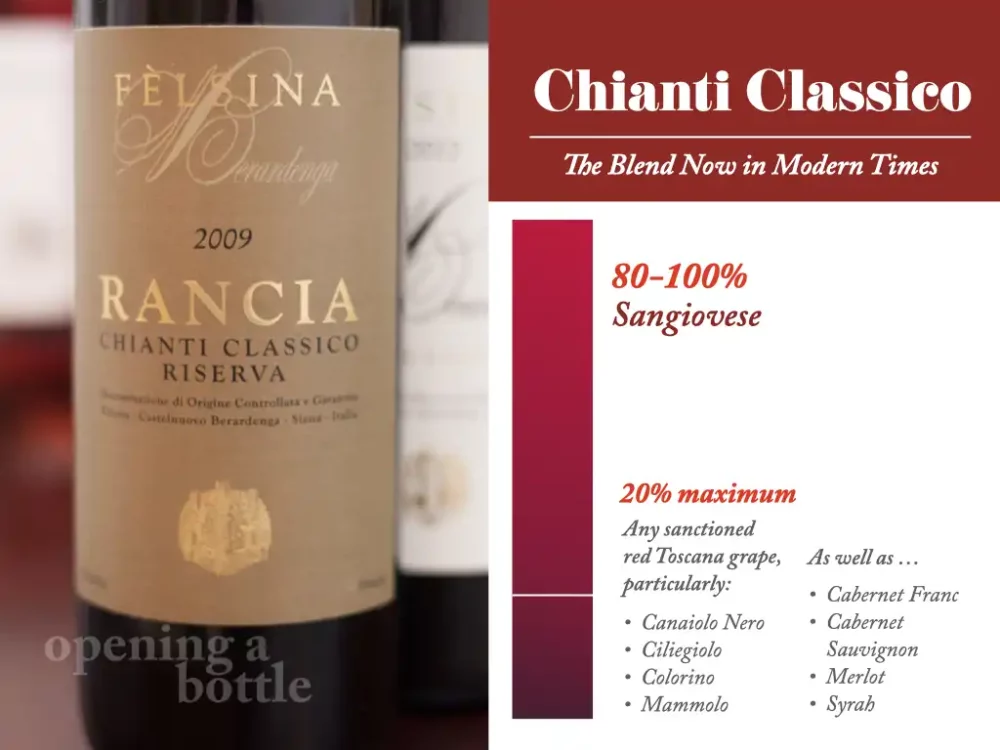
These auxillary grapes can include Canaiolo, Colorino, Ciliegiolo, Fogliatonda, Mammolo, Malvasia Nera and Pugnitello, although Canaiolo and Colorino are the most common you will see. Canaiolo softens the edges, while Colorino adds exactly what its name suggests: color. In small amounts, neither grape takes much away from Sangiovese, but they do have a natural alchemy. However, one winemaker — Enrico Pozzesi of the fantastic estate Rodáno — told me that the warming climate of Chianti Classico is giving Sangiovese more balance and color, rendering these grapes less necessary in future blends.
There are also a few international varieties allowed as auxiliary blending partners, including Merlot, Cabernet Sauvignon, Cabernet Franc and Syrah. What these assertive and strong-willed grapes lend to Sangiovese is the subject of much debate. To my taste and interests, these grapes alter Sangiovese’s distinctive, only-from-Chianti Classico profile. Whether its Merlot’s body and tannin, Cabernet’s peppery spice, or Syrah’s depth, the traits of these assertive French grapes tend to render Sangiovese’s most distinctive attributes mute.
These wines can still be outstanding examples of the structured, robust style that has defined international taste for decades. If you enjoy red blends from Napa or Bordeaux, you’ll likely enjoy them as well. But as a curious wine drinker who wants to taste something distinctive and unique — that is, a wine that transmits the unique character of these hills — they miss the mark because of how altered Sangiovese’s voice becomes in the blend.
Categories: Aging and Oak
Chianti Classico also has three levels of aging requirements that producers can select. Frequently, a winery will produce two or three different Chianti Classico wines set to these categories. Some go a step further and produce multiple wines within a single category.
To explain these categories, listen to the president of the Consorzio Vino Chianti Classico, Giovanni Manetti of Fontodi, in this video we filmed in April 2022. A cheat sheet follows:
Chianti Classico (“Annata”)
Price Range: typically $11–$30
Requirements: Annata bottlings are simply labeled as “Chianti Classico” and require the least amount of aging before release (no sooner than October 1 of the year following harvest). Annata means “vintage” in Italian, so this is the wine that’s released every year, regardless of conditions.
The Profile & Pairings: Since these wines see the least amount of oak, they often show Sangiovese’s lighter side with fresh red fruits, savory inflections, and a thread of citrus through the middle that holds everything together. These wines have the widest range of versatility with food pairings.
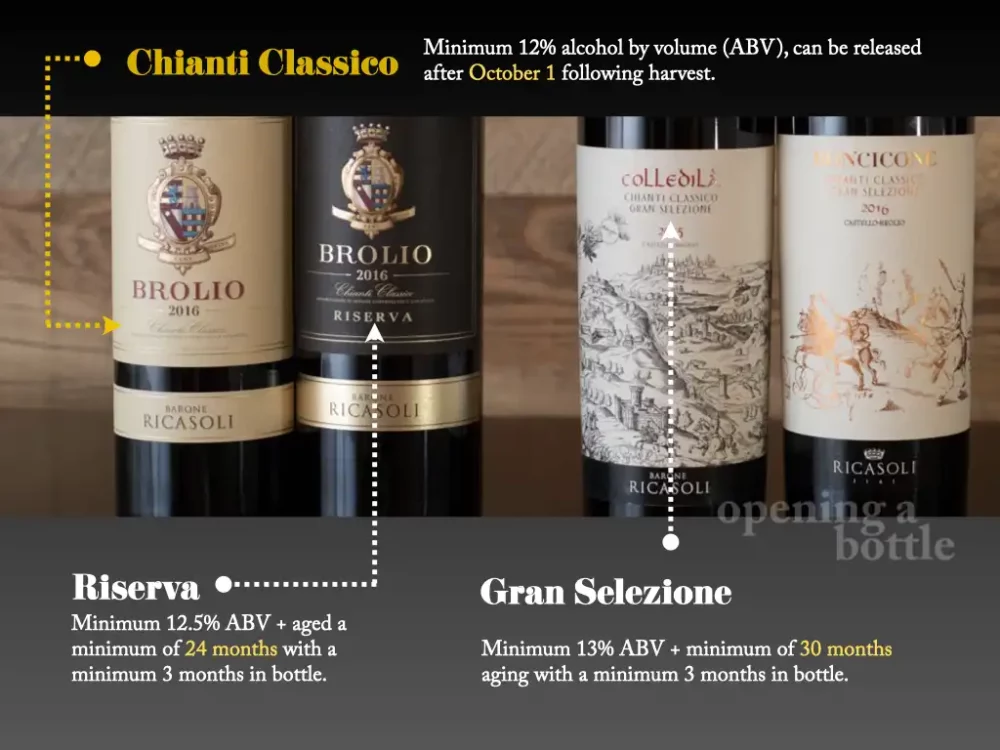 Chianti Classico Riserva
Chianti Classico Riserva
Price Range: typically $25–$45
Requirements: A minimum of 24 months of aging, of which a minimum of three months must be in bottle.
Until the recent introduction of the Gran Selezione category, the Riserva category was at the top of the hierarchy. Initially, the only real distinction between the two wines was (a) the extra six months of aging, (b) a requirement of 90% Sangiovese in Gran Selezione, and (c) the caveat that Gran Selezione could only be made with estate fruit. Riserva does not have these last two restrictions. While it would be easy to assume these wines are a “middle child,” many producers have decided to forego Gran Selezione and keep their top wine as Riserva, including several of the finest estates in Chianti Classico: Badia a Coltibuono, Poggerino, Monteraponi, Istine, Caparsa and Rodáno, to name just a few.
The Profile & Pairings: Flavors and aromas tend to be more concentrated with the Riserva category, and more structured. For food pairings, lean toward heartier and fattier dishes that typically scream “red wine tonight.”
Chianti Classico Gran Selezione
Price Range: typically $55-$85
Requirements: Chianti Classico Gran Selezione requires a minimum of 30 months of aging, of which a minimum of three months must be in bottle. Additionally, all fruit must be estate fruit, and the blending percentage of Sangiovese must be 90% or higher, rather than the standard 80%. Another positive development: international varieties will no longer be allowed in this category with newly adopted changes.
The Story: Winemakers have increasingly looked to this category as their “single-vineyard” wine, with the name on the label often referencing a singular parcel. (However, there are exceptions, like Rodáno’s “Viacosta,” which is a Chianti Classico Riserva).
Differences in taste and appearance between Riserva and the Gran Selezione are often miniscule. Some producers take those extra six months to age the wine longer in oak, and — depending on the age and size of the vessel — you can get more oak flavors with the Gran Selezione. I’ve heard many wine professionals claim that Gran Selezione wines are nearly always oakier, but I found a few that bucked this trend. I wouldn’t assume this will be the case long-term, as heavy oak is increasingly falling out of fashion.
One added incentive to label a wine as Gran Selezione (at least in the near-future once it clears bureaucratic hurdles in Rome) is the option to include the name of the village where the wine hails from. These UGAs (Unita Geografica Aggiuntiva) include:
- Castelnuovo Berardenga
- Castellina
- Greve
- Gaiole
- Lamole
- Panzano
- Radda
- Montefioralle
- San Casciano
- Vagliagli
- San Donato in Poggio
There is passionate discussion within Chianti Classico about expanding the UGA designation to the Riserva and Annata categories. Most producers seem to be on board with this idea, because (a) showcasing terroir and clarifying village identity is good for everyone in Chianti Classico, and (b) sometimes fresher, less structured wines can reveal terroir just as well. There is also the simple truth that the aging requirements of Gran Selezione require ample financial resources that not all producers have. Is it fair to exclude them from terroir-centric labeling if it could be of service to their customers?
There is a wrinkle. If Riserva and Annata wines continue to allow international varieties, then the concept of village labeling falls apart (e.g. Does Gaiole taste like spiced plums and peppercorn? Nope. That’s the Merlot talking).
We shall see where the cards fall in the coming years. I would brace for more subtle changes to the code, but it feels like the region as a whole is getting closer to a long-term structure for classifying all of its wines.
Since I am not writing a book, we won’t get into the distinct properties of these 11 villages here, which would require another 1,000 words of the unique geology of these hills as well as the distinct microclimates. The important take-away is that Chianti Classico has undergone a massive shift in philosophy over the last two decades: from prioritizing the blend on a winery-by-winery level to emphasizing Chianti Classico’s unique terroir.
Your First Taste
If this sounds like a lot to keep track of, it is. Chianti Classico requires a lot of education on the part of consumers, and still, selecting the right bottle comes down to picking the best producers.
Since you’ve likely had Chianti Classico before, let’s call this section your first taste as a student of Chianti Classico. Hopefully, with a little background on this DOCG’s origins, your next bottle will feel like a fresh encounter.
In selecting these wines, I looked for very specific things. Sangiovese is a sensitive grape that is not particularly aromatic like Pinot Noir, Cabernet Sauvignon or Nebbiolo. The aromas are there and can be absolutely beautiful, but they need space to operate. Over the last nine months, I’ve tasted nearly 100 Chianti Classico wines, and the best ones always showcased Sangiovese front and center. Coincidentally, all of the wines in the top 50% of this sampling excluded international varieties, too.
Oak aging is another needle that needs to be threaded. I’ve found very few examples of Chianti Classico aged in small barrique or newer tonneaux barrels that don’t speak of French oak first. Just like Nebbiolo and Aglianico, Sangiovese’s sensitivity to oak usually means it needs older barrels and casks, or — in the case of some Annata wines — no oak at all. Cement tanks are a common fermentation vessel throughout Chianti Classico.
With all that said, below are my recommendations for your starting point in each category of Chianti Classico.
First Taste of Chianti Classico (Annata)
Istine
UGA: Radda
Angela Fronti makes some of Chianti Classico’s silkiest wines. Her high elevation vineyards are exceedingly stony, and one cannot help but notice how her Annata wines boast a remarkable minerality. In total, she makes four Annata wines — a blend of multiple plots and then three single vineyards — as well as a Riserva. The single-vineyard Annata wines are in high demand and can be hard to find. So, for a “first taste” seek out the 2020 Istine Chianti Classico (★★★★ 3/4), which requires little effort to parse and dissect: it’s just a chilled-out, elegant wine indicative of its mountain origins. Look for elements of spice and savory to show up at times. If you ask me, this is the baseline for how Chianti Classico ought to be.
Caparsa
UGA: Radda
Radda seems to be everybody’s favorite village, and for good reason: it is stacked with talented winemakers, and the cool mountain terroir seems to give Sangiovese the room it needs to operate.
Caparsa is one of the lesser known estates in Radda, but winemaker Paolo Cianferoni should be on everyone’s list for his simpler-is-better approach and passion for organic viticulture. His 2018 Chianti Classico (★★★★ 3/4) is an iconic representative of just how fine an annata wine can be. There’s that signature cherry-orange-meatiness we come to crave from Chianti, but with a lovely minty streak as well. On the palate, his wine may remind you more of Pinot Noir than the Sangiovese you are used to. I offered this wine at a recent virtual tasting event and it was the crowd favorite. Fun fact: he is also the uncle of Angela Fronti from Istine.
Go Deeper with our Tasting Report on Chianti Classico Annata
First Taste of Chianti Classico Riserva
Badia a Coltibuono
UGA: Gaiole
Solidly organic and traditional in the winery, Badia a Coltibuono makes wines of supreme patience and delicacy. This is one of Italy’s greatest wine estates, yet somehow, it is still underrated (read: the wines are a bargain). Their Riserva can age magnificently, as a recent comparative tasting of two recent vintages — the 2015 and 2007 (both ★★★★★) — demonstrated.
There is a temptation when studying Chianti Classico to ask: why not just abandon blending altogether and go with 100% Sangiovese? Badia a Coltibuono answers that question resolutely. For this wine, Sangiovese is blended with Canaiolo, Ciliegiolo and Colorino for an elegant and timeless expression of this quartet’s famous alchemy. In younger vintages, Badia a Coltibuono’s Riserva shows notes similar to fennel and salami, but it seems to transition to menthol, mint and leather as the wine ages.
At $36, it is a true standout, and a superb wine to start a cellar with.
Go Deeper with our Tasting Report on Chianti Classico Riserva
First Taste of Chianti Classico Gran Selezione
Villa Calcinaia
UGA: Montefioralle
How Villa Calcinaia has stayed under the radar in America is a bit of a mystery to me. This producer is fantastic. Their Annata is one of Chianti Classico’s finest, and the standard Riserva — while requiring time to spill its secrets — has outstanding potential for 10 to 15 years down the road.
But I want to spotlight Villa Calcinaia’s three Gran Selezione, because more than any other wine from this category, they show its purpose. “La Fornace” (★★★★ 3/4), “Bastignano” (★★★★ 3/4), and “Contessa Luisa” (★★★★ 3/4) are each single-vineyard wines boasting sandy, silty and clay-rich soils respectively. I recently tasted the 2018 of each vintage. Winemaker Sebastiano Capponi is quite intellectual, and he loves to describe the variety of soils in these vineyards and how they lend minerality to “Fornace,” generosity to “Bastignano” and a wild power to “Contessa Luisa.” If you are going to make a Gran Selezione, you’ll need to (a) showcase the unique attributes of your estate vineyards and (b) restrain your oak usage, two concepts that Capponi certainly understands and demonstrates with his wines. This is a great example of the category’s potential.
Go Deeper with our Tasting Report on Chianti Classico Gran Selezione

Love Chianti Classico? Subscribe to Opening a Bottle
These are ideal wines as a starting point to a deeper appreciation of Chianti Classico, but they’re not exclusively the best wines. Subscribers can learn more with our Chianti Classico Tasting Reports linked above as well as the Essential Winemakers of Italy section.
Note: For this updated guide, I toured Chianti Classico for three days and visited 12 different wineries. With the help of paying subscribers, I funded my airfare and travel to the region, as investigating Central Tuscany was a high priority for me post-pandemic. Knowing my high level of interest in researching the area for editorial, the Consorzio Vino Chianti Classico offered quite a bit of assistance while I was there, both in terms of travel and food costs within the region, and in terms of setting up appointments. This afforded me tremendous access to not only interesting and candid conversations with producers and the consortium, but also a breadth of wines to taste. Learn more about my editorial and samples policy.

